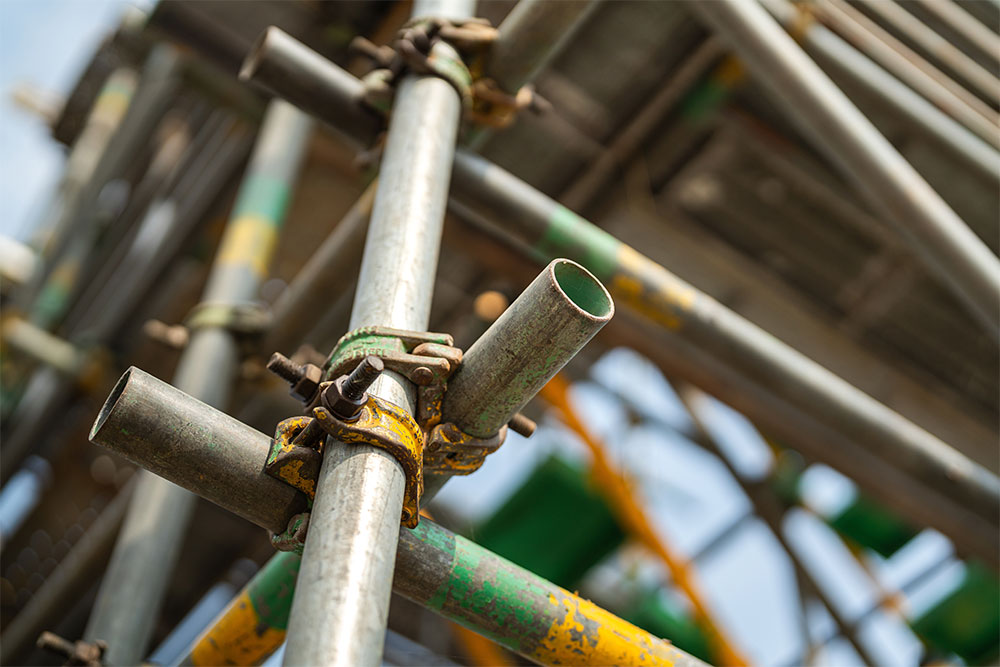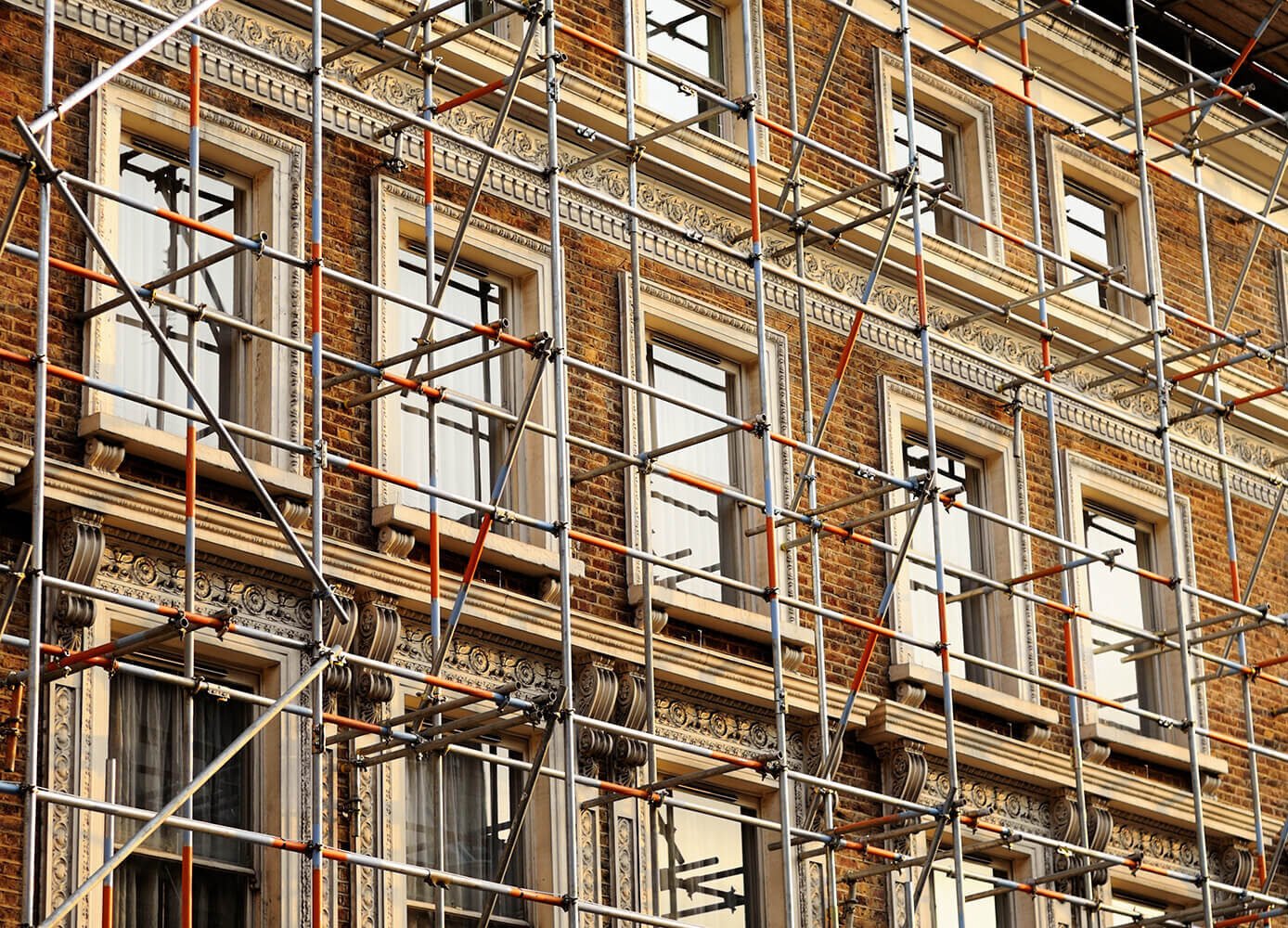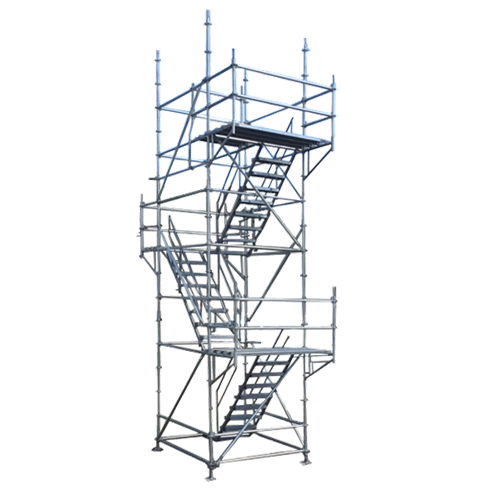Checking Out the Different Kinds Of Scaffolding Made Use Of in Building Jobs
The building industry depends heavily on different sorts of scaffolding to meet certain job needs, each offering unique advantages and applications. Standard frame scaffolding provides a strong foundation for basic tasks, while put on hold scaffolding is essential for service skyscraper structures. Other options, such as system and rolling scaffolding, accommodate effectiveness and mobility, respectively. Moreover, the cantilever alternative shows invaluable in city environments where area is constricted. Understanding the subtleties of these scaffolding kinds is crucial for optimizing security and performance on building and construction websites, prompting a better evaluation of their special features and applications.

Traditional Framework Scaffolding
Conventional structure scaffolding is one of one of the most commonly used approaches in the construction market as a result of its effectiveness and versatility. This system is composed of horizontal and upright frames that are put together to produce a stable system for employees and materials. The major parts consist of upright messages, horizontal ledgers, and angled dental braces, which together give a strong framework that can sustain considerable tons.
Among the key benefits of typical structure scaffolding is its flexibility to different building and construction tasks, varying from residential buildings to huge business frameworks. The modular style permits for easy setting up and disassembly, making it effective for both short-term and long-term jobs. Additionally, the system can be tailored in height and width, suiting different structure layouts and site conditions.
Security is critical in scaffolding applications, and traditional frame systems are geared up with guardrails and toe boards to stop falls and make certain worker protection. Furthermore, normal examinations and adherence to safety regulations are important in preserving the honesty of the scaffold. On the whole, standard structure scaffolding continues to be a basic choice in the building and construction industry, giving a reputable system for labor and improving overall task effectiveness

Suspended Scaffolding
Put on hold scaffolding offers an unique solution for construction projects that require accessibility to elevated surfaces, especially in scenarios where traditional framework scaffolding may be impractical. This kind of scaffolding is typically suspended from the roofing or upper levels of a structure, using a system of ropes, sheaves, and systems to produce a functioning area that can be adapted to different heights.
Among the key advantages of put on hold scaffolding is its adaptability. It can be easily repositioned or lowered to suit modifications in building and construction requirements, making it ideal for jobs such as home window installation, frontage job, and maintenance on high-rise buildings. Furthermore, the minimal footprint of suspended scaffolding permits better use ground space in urban settings, where area is often restricted.
Safety and security is an essential factor to consider in using put on hold scaffolding. Appropriate rigging and securing systems should be utilized to make sure security and stop mishaps. Operators needs to likewise be learnt the risk-free use of this devices. On the whole, suspended scaffolding offers a effective and efficient solution for accessing hard-to-reach areas in various construction scenarios, enhancing both performance and safety and security on site.
System Scaffolding
System scaffolding, often considered a modern option in the scaffolding market, consists of pre-engineered parts that can be rapidly assembled and adjusted for numerous building jobs. Scaffolding. This sort of scaffolding is identified by its modular layout, which permits versatility and performance on job sites, suiting different elevations and structural demands
Commonly made from high-strength steel or light weight aluminum, system scaffolding provides enhanced sturdiness and stability. The parts include vertical posts, straight ledgers, and diagonal dental braces, which adjoin securely, guaranteeing a robust framework. The style frequently includes standard installations, simplifying assembly and disassembly procedures, consequently lowering labor time and prices.

Rolling Scaffolding
Moving scaffolding is a flexible alternative to conventional fixed scaffolding, designed for movement and ease of use on building and construction websites. This sort of scaffolding is composed of a system supported by frames with wheels, enabling workers to easily move it as required. The movement feature significantly boosts efficiency, as it decreases downtime related to taking apart and putting together repaired scaffolding.
Commonly constructed from lightweight materials such as light weight aluminum or steel, rolling scaffolding supplies a strong yet portable remedy for jobs calling for regular repositioning - Scaffolding. It is especially advantageous in tasks such as painting, drywall installment, and electric job, where accessibility to numerous heights and areas is needed
Security is paramount in rolling scaffolding style, with features such as locking wheels to avoid unplanned activity when being used, and guardrails to safeguard workers from drops. Furthermore, many designs are adjustable in elevation, fitting different task demands.
Cantilever Scaffolding

The design of cantilever scaffolding commonly entails using brackets or arms anchored to a structure or structure, allowing the system to extend exterior securely. Safety is critical; thus, these scaffolds should be crafted to endure environmental problems and numerous loads. Normal assessment and maintenance are crucial to make sure structural integrity and worker safety and security.
Cantilever scaffolding is preferred for its versatility and effective usage of space, making it a preferred option in city settings where room restrictions prevail. In addition, it assists in easier access to high altitudes, ultimately contributing to the general efficiency of building tasks. Similar to all scaffolding types, appropriate training and adherence to safety and security requirements are essential for employees making use of cantilever scaffolding.
Final Thought
Standard framework scaffolding offers security, while put on hold scaffolding provides adaptability for raised jobs. System scaffolding facilitates fast setting up, and rolling scaffolding boosts mobility for differing job atmospheres.
Conventional frame scaffolding provides a durable foundation for general tasks, while suspended scaffolding is crucial for work on skyscraper frameworks.Rolling scaffolding is a flexible option to conventional fixed scaffolding, designed for flexibility and convenience of usage on building websites. As more with all scaffolding types, correct training and adherence to safety and security requirements are vital for employees using cantilever scaffolding.
Traditional framework scaffolding gives stability, while put on hold scaffolding provides flexibility for raised jobs. System scaffolding assists in quick assembly, and rolling scaffolding boosts flexibility for differing work environments.